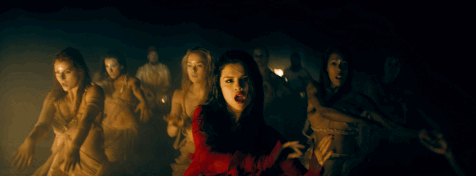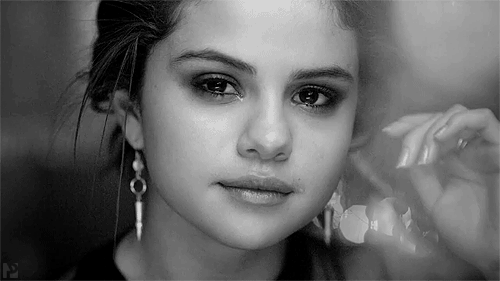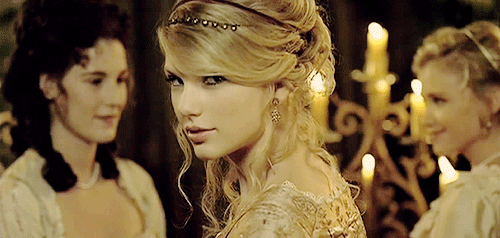
ANDREW GOODWIN'S MUSIC VIDEO THEORY
Andrew Goodwin was a director of music videos who created six steps to bring to the audiences attention what helps assist the directors when they are making a music video.
MUSIC VIDEOS DEMONSTRATE GENRE CHARACTERISTICS
Depending on the genre of the song, the style and type of music video created will heavily depend on this. For example, Rock videos tend to feature stage performances whereas pop videos by girl bands feature dance routines. Selena Gomez features multiple dance routines throughout the whole of her song 'Come and Get It' as it is a Electropop and Bhangra song which both as genres have connotations of dance with an upbeat, happy tempo. This is used as an element to keep the audience entertained with the dance segments but also to establish the genre of Bhangra especially, which is also noticed through the choice of outfit.

RELATIONSHIP BETWEEN LYRICS AND VIDEO

A close relationship between the lyrics and the actual video is seen commonly in a Narrative music video as it is almost as if the song is telling a story which is closely established by the images in the video. More commonly in pop videos, a metaphor is used to tell a story. For example in Grenade by Bruno Mars he is seen pulling a piano up a hill which represents the hard and painful time he is having in his relatinship. On the other hand, it could represent his struggle of how he writes a song and the blocks he comes in contact with as the piano being dragged up the hill could imply that he feels like he has to pull everything together to write a successful song, but it is a struggle. The unique thing about the lyrics of a song is that they can be inferred in any way and the music video is merely just a representation of what the artist believes their song is about personally to them.
RELATIONSHIP BETWEEN MUSIC AND VISUALS
Goodwin also states that the tone of the music must match the video. The atmosphere that is aimed to be created should be reflected in the video. For example, in Selena Gomez's single, Heart Want What It Wants, there is dark lighting and longer scenes with close ups to show the pain on her face as she sings about her heartbreak. It also reflects the upsetting and low mood. The longer shots show her realistic misery as she is able to let the audience see the low spirits Selena is expressing. Not having the scenes edited together at a fast pace makes the song as a whole seem more slow and emotional as there is more time for the audience to see and feel her emotion. Whereas in a more upbeat Pop song, there will be multiple shots with a brighter lighting and the element of cheerfulness across the artist features.

STAR REPRESENTATION

Another element to Goodwin's theory is Star Representation which demonstrates the idea that a music video should reinforce the image of the artist in which it is promoting. This is seen a lot of the time in Pop videos as the artist/ band are commonly in almost all the shots, minus the background shots to set the scene. To gain a sense of consistency it is vital to place an emphasis on the artist as a representation of their work. For example, in Katy Perry's video for her single Dark Horse, she has multiple close-up shots and scenes where she is in the centre to show how she is the main focus of the video as she is the product that the audience are mostly interested in and want to consume in terms of her music. Additionally, this is also shown through the magical scenes and makeup that her team have created to fully portray the general pop star with wild outfits that aren't seen on a day-to-day basis.
INTERTEXTUAL REFERENCES
The final element of Goodwin's theory is the concept that some music videos may reference other elements of the performance industry to make the audience feel like they are involved because they are in on the joke that the artist or band is trying to create. Another way to look at this, is that some artists may add other elements for publicity as referencing another famous idea may add fame and light to the artist. It may also add relevance to a song as having a concept relating to the lyrics could help the audience determine the storyline. This is clearly seen in Taylor Swift's Love Story as the lyrics comment on the story of Romeo and Juliet to which Taylor re-enacts in a modernised version, forming the intertextual reference.
